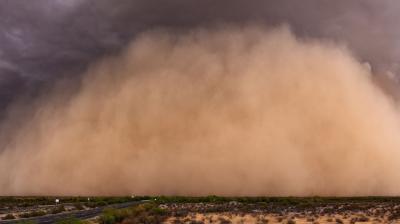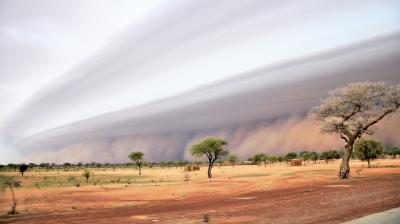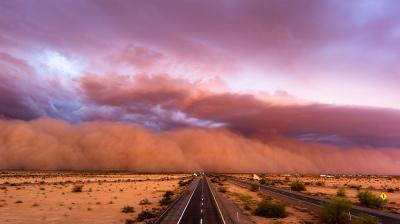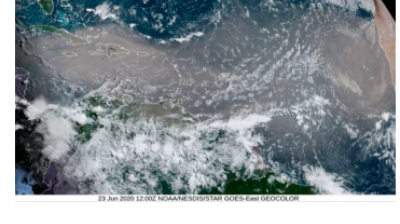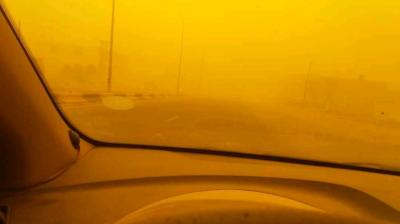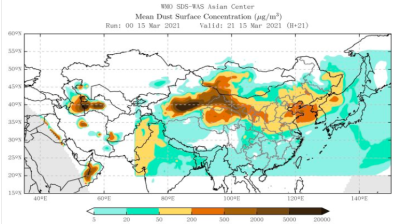Sand and dust storm hits Europe
A major intrusion of sand and dust from the Sahara transformed skies and the landscape over Europe on the weekend of 6-7 February, with far-reaching impacts for the environment and health. It once again highlighted the importance of accurate forecasts and warnings of this transboundary hazard.
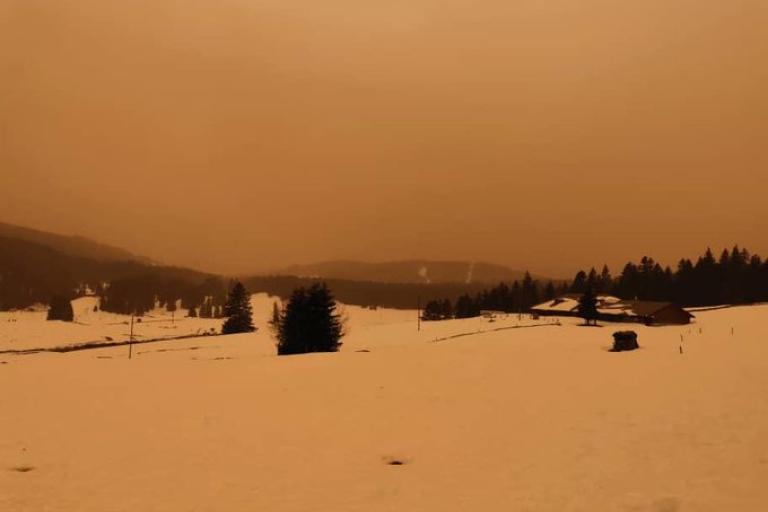
A major intrusion of sand and dust from the Sahara transformed skies and the landscape over Europe on the weekend of 6-7 February, with far-reaching impacts for the environment and health. It once again highlighted the importance of accurate forecasts and warnings of this transboundary hazard.

The timing and extension of the event was correctly predicted by the Barcelona Dust Forecast Centre, which acts as WMO’s Sand and Dust Storm Warning Advisory and Assessment System’s (SDS-WAS) regional centre for Northern Africa, Middle East and Europe (NAMEE). The system seeks to provide operational forecasting and warning advisory services for various regions of the world in a globally coordinated manner in order to reduce the impacts on the environment, health and economies.
“We knew about the event in advance. The models were really good in predicting the event,” said Sara Basart, at the Barcelona Supercomputing Centre, which serves as the operational hub.
The sand and dust storm started on 5 February in northern Algeria, reducing visibility to 800 meters. The same day, the dust particles were transported through the atmosphere to south-east Spain, and the next days, the dust plume move on to southern and central Europe, turning the sky yellow, coating buildings and cars with sand and dust and covering snow on the Pyrenees and Alps mountain ranges with sand.
On 8 February, the dust intrusion reached the eastern Mediterranean. There was also high dust surface concentration over Africa’s Sahel region, which is one of world’s worst affected regions.
“It is not just a case of having dirty windows or cars. Sand and dust storms cause much wider problems than that,” said Slobodan Nikovic, a member of the Global SDS-WAS Steering Committee and the chair of the regional steering group of the SDS-WAS NAMEE Node.
Mark Parrington, Senior Scientist at the Copernicus Atmosphere Monitoring Service comments: “These dust clouds brought with them high values of surface PM10 concentrations and aerosol optical depth. We saw air quality values in the affected regions drop significantly. In fact, the impact of the Saharan dust clouds is clearly visible for affected cities, such as, for example, Barcelona or Marseille on our Website. Our microsite dedicated to monitoring air quality in the context of COVID-19 can be used to see the impact of the event.”
Sand and dust storms are common meteorological hazards in arid and semi-arid regions. They are usually caused by thunderstorms – or strong pressure gradients associated with cyclones – which increase wind speed over a wide area.

Every year, around 2,000 million tons of dust enters the atmosphere. Much of this is a natural process, but a large part of it is the result of poor water and land management.
Over the last decade, scientists have come to realize the impacts on climate, human health, the environment and many socio-econimic sectors.
WMO Members are at the vanguard in evaluating these impacts and developing products to guide preparedness, adaptation and mitigation policies. The WMO Sand and Dust Storm Project was initiated in 2004 and its Sand and Dust Storm Warning Advisory and Assessment System (SDS-WAS) was launched in 2007. WMO is also part of a UN coalition to combat sand and dust storms.
More than 20 organizations currently provide daily global or regional dust forecasts in different geographic regions, including 7 global models and more than 15 regional models contributing to SDS-WAS. It integrates research and user communities (e.g., from the health, energy, transport, aeronautical, and agricultural sectors).
Presently, there are three Regional Nodes of SDS-WAS: the Northern Africa-Middle East-Europe Node with its center, hosted by Spain, the Asian Node with its center, hosted by China, and the Pan-American Node with its center, hosted by Barbados and the USA.

“Reaching the last mile is extremely important. We need to pay more attention to the communication of this product,” says Alexander Baklanov, of WMO’s Atmospheric Environment Research division, Science and Innovation department.
WMO is therefore overseeing and monitoring the progress of the implementation of early warnings of sand and dust storms as part of WMO’s multi-hazard early warning system.
The other major challenge is to ensure that the warnings are available in countries most impacted, including in West Africa.
WMO is collaborating with the Spanish national meteorological agency AEMET and the Barcelona Dust Forecast Centre to improve warnings in Burkina Faso, one of the countries hardest hit. With funding from the Climate Risk and Early Warning Systems Initiative (CREWS), Burkina Faso has implemented a web page for Sand and Dust Warnings for the country, and will be extended for several other West African countries. AEMET is deploying a network of aerosol Particulate Matter (PM) instruments, which are important for health applications, given the correlation between sand and dust storms and respiratory problems, as well meningitis in the extended meningitis belt which spans 26 countries from Senegal to Ethiopia.
- WMO Member:
- Spain ,
- France ,
- Switzerland




